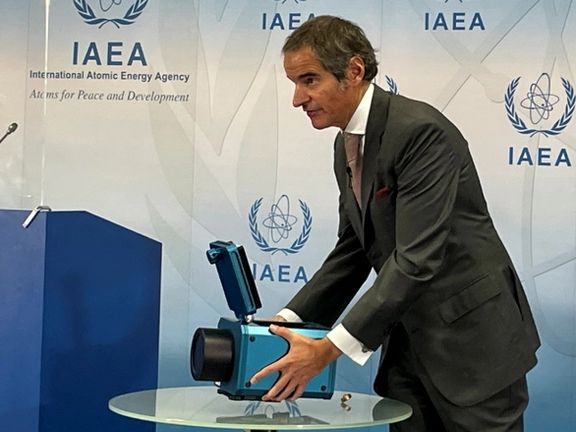IAEA Has Doubts That Iran Surveillance Camera's Footage Vanished

The United Nations atomic watchdog has doubts that footage from a surveillance camera at an Iranian centrifuge plant is missing after an apparent attack there in June.

The United Nations atomic watchdog has doubts that footage from a surveillance camera at an Iranian centrifuge plant is missing after an apparent attack there in June.
Iran has not produced the footage, Rafael Grossi, the head of the International Atomic Energy Agency (IAEA) said on Friday.
The issue was not addressed by an agreement between Iran and the IAEA on Wednesday that allowed the IAEA re-install cameras at the Karaj workshop that Iran removed after the apparent attack, which Tehran blames on Israel.
Iran had since refused the IAEA access to replace cameras damaged in the incident, part of an ongoing hardline tact taken by Tehran at negotiations underway in Vienna over its tattered 2015 nuclear deal with world powers.
The new agreement this week should end a months-long standoff over IAEA access there.
In response to a question by Iran International Grossi said that Iran's request to check new cameras before installation is not something new and other countries also routinely do that.
Grossi also indicated that there was no opposition from the United States to his organization's latest agreement with Iran.

Iran says one of four IAEA cameras at the Karaj facility producing uranium enrichment machines was destroyed in the June incident. Iran removed all four cameras and showed them to the IAEA, but the destroyed camera's data storage device was not included. The IAEA and Western powers have been asking Iran to explain, unsuccessfully so far.
"We have doubts about that and this is why we are asking, 'Where is it?’" Grossi told a news conference when asked if it was credible that the footage simply vanished.
"I am hopeful that they are going to come up with an answer because it's very strange that it disappears."
The agreement on Karaj avoided a diplomatic escalation that threatened to scupper wider talks on rescuing the 2015 Iran nuclear deal (JCPOA).
Talks between Iran and world powers since April to bring both the United States and Iran back to compliance with JCPOA have so far failed to produce a result. The US withdrew from the agreement in 2018 and Iran responded by increasing uranium enrichment.
The cameras are aimed at verifying Iran is not secretly siphoning off the parts for uranium-enriching centrifuges that are made there, but the footage will remain under seal in Iran, so the IAEA cannot view it for now, as has been the case at various locations since February.
The IAEA has not been able to verify whether Karaj has resumed operations, but Grossi said "it would be a logical conclusion" that advanced centrifuges recently installed at Fordow, a site buried inside a mountain, came from there.
With reporting by Reuters and AP